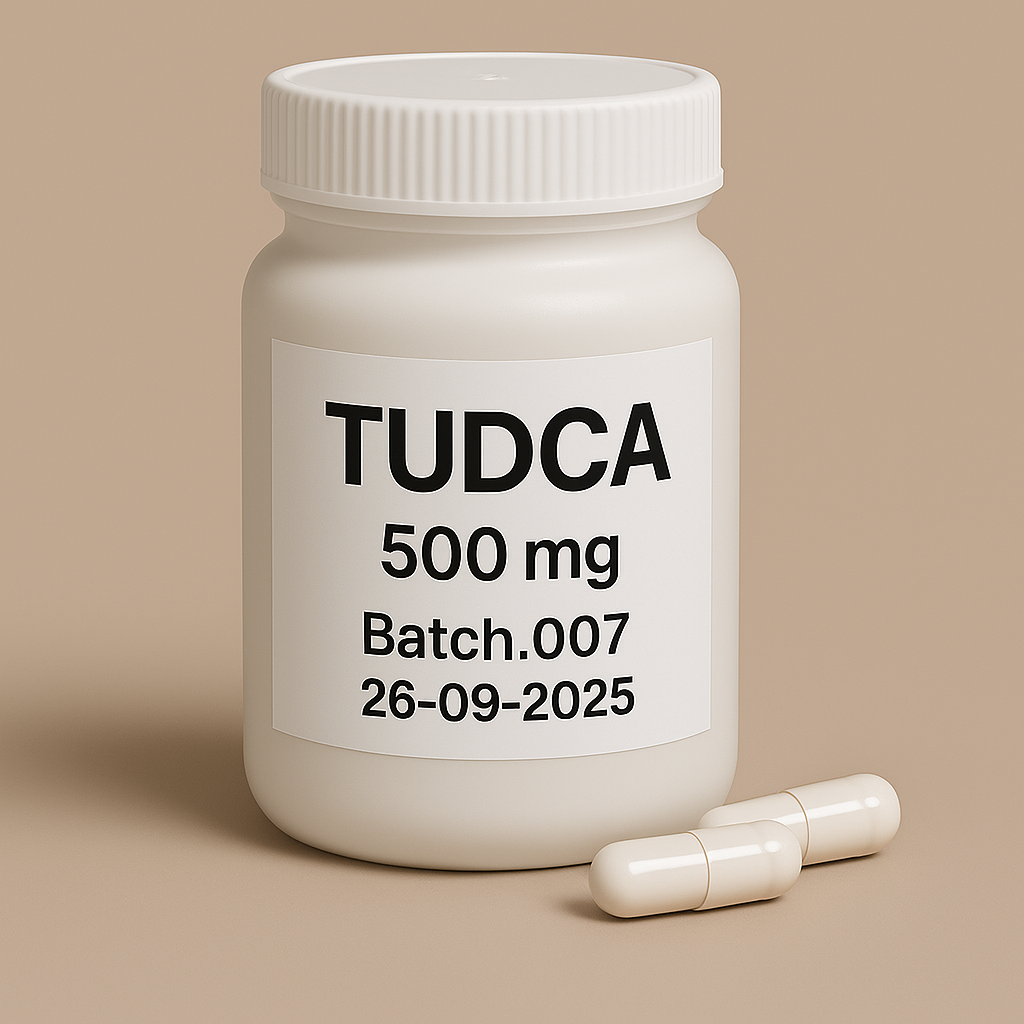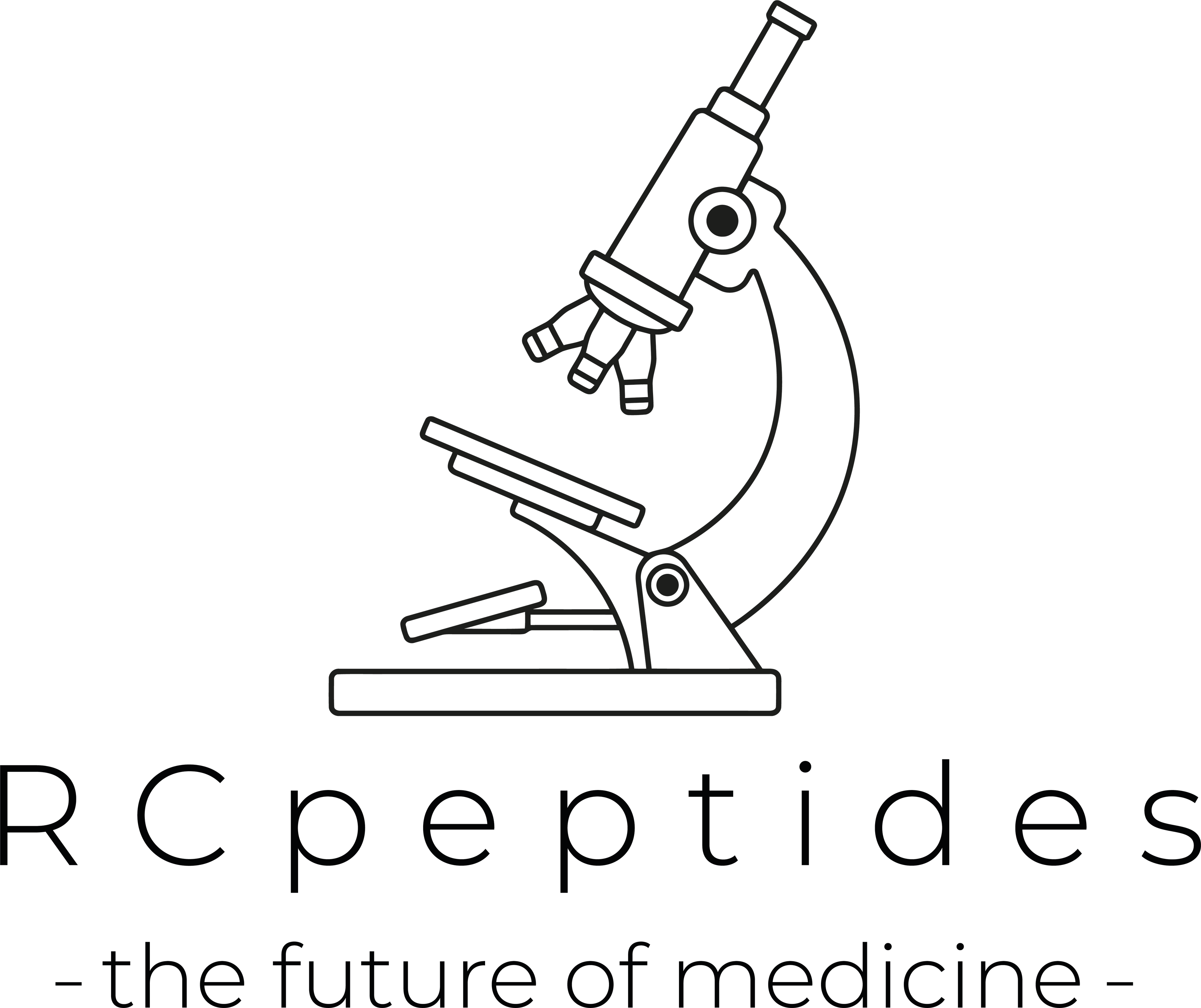
TUDCA 100x500mg
Afhentning er ikke tilgængelig lige nu
NOT FOR HUMAN CONSUMPTION
TUDCA is the taurine-conjugated form of ursodeoxycholic acid (UDCA)—a hydrophilic, cytoprotective bile acid that acts as a chemical chaperone to relieve endoplasmic-reticulum (ER) stress, stabilizes mitochondria (anti-apoptotic), and modulates bile-acid receptors (notably TGR5; very weak FXR activity). Clinically, UDCA is widely used for cholestatic liver disease; TUDCA is available as a drug in some countries and as a supplement in others. Interest spans liver, metabolic, neurologic, and ocular indications.
Additional Benefits of TUDCA Now Under Investigation
| Benefit | Key take-aways |
|---|---|
| 1 NAFLD/MASH support | Small RCTs and pilots show ALT/AST reductions, MRI-PDFF liver-fat decreases, and improved insulin sensitivity—likely via ER-stress relief and improved hepatocellular bile-acid handling. <br/><em>Hepatology; Liver International</em> |
| 2 Cholestatic cytoprotection | Intrahepatic cholestasis and drug-induced cholestasis models show reduced hepatocyte apoptosisand better cholestatic labs; human data are strongest for UDCA, with TUDCA as mechanistic adjunct. <br/><em>Journal of Hepatology; Alimentary Pharmacology & Therapeutics</em> |
| 3 Neurodegeneration (ALS, PD, HD) | TUDCA crosses the BBB; multiple early-/mid-phase studies suggest slower functional decline or biomarker improvement in ALS/Parkinson’s/Huntington’s; larger confirmatory trials are mixed but ongoing. <br/><em>Neurology; Annals of Neurology</em> |
| 4 Diabetes/insulin resistance | In obese/insulin-resistant adults, TUDCA improves hepatic and peripheral insulin signaling (↑ insulin sensitivity) and lowers inflammatory markers. <br/><em>Diabetes; JCEM</em> |
| 5 Retinal/ocular protection | In retinitis-pigmentosa and diabetic-retinopathy models, TUDCA reduces photoreceptor apoptosis and preserves ERG function; small human feasibility work is underway. <br/><em>Investigative Ophthalmology & Visual Science; Experimental Eye Research</em> |
| 6 Bariatric/metabolic surgery adjuvant | May attenuate post-operative liver stress and improve bile-acid pool hydrophilicity; mechanistic/biomarker signals predominate. <br/><em>Obesity Surgery; Metabolism</em> |
| 7 Mitochondrial disease & myopathy signals | Anti-apoptotic and mitochondrial-stabilizing actions (↓ Bax translocation, ↓ cytochrome-c release) show functional benefits in models. <br/><em>Cell Death & Disease; Journal of Physiology</em> |
| 8 Gut barrier & microbiome | Hydrophilic bile-acid enrichment can reduce bile toxicity, improve intestinal tight junctions, and favorably shift bile-acid–microbiota crosstalk. <br/><em>Gut; Gastroenterology</em> |
| 9 Drug-induced liver injury (DILI) adjunct | Case series and small studies suggest faster enzyme normalization in selected cholestatic DILI phenotypes (evidence still preliminary; UDCA remains the reference). <br/><em>Hepatology Communications; Clinical Gastroenterology & Hepatology</em> |
2. Molecular Mechanism of Action
2.1 Pharmacodynamics
-
ER-stress “chemical chaperone”: TUDCA stabilizes protein folding, normalizes the unfolded-protein response (UPR) (PERK/eIF2α, IRE1/XBP1, ATF6), and reduces CHOP-mediated apoptosis.
-
Mitochondrial protection: Inhibits Bax activation/translocation, preserves ΔΨm, reduces ROS, and limits caspase-9/3 activation.
-
Bile-acid signaling: Predominantly TGR5 agonism (↑ cAMP; GLP-1 and energy-expenditure signals in some tissues); minimal FXR agonism compared with chenodeoxycholic acid/obeticholic acid.
-
Membrane/cytoprotection: Renders the bile-acid pool more hydrophilic, reducing detergent injury to hepatocytes/cholangiocytes.
2.2 Down-stream Biology
| Pathway | Functional outcome | Context |
|---|---|---|
| UPR rebalancing (PERK/IRE1/ATF6) | ↓ ER-stress, ↓ apoptosis | Liver, β-cell, neurons |
| Bax–caspase axis inhibition | Mitochondrial integrity ↑ | Hepatocyte/neuronal survival |
| TGR5 signaling | GLP-1 ↑, thermogenic/anti-inflammatory cues | Enteroendocrine, adipose, immune |
| Bile-acid pool hydrophilicity | Cholestatic injury ↓ | Liver/biliary epithelium |
3. Pharmacokinetics
-
Route: Oral (capsules, tablets); also IV in some research settings.
-
Absorption: Variable; enhanced with food; undergoes enterohepatic recirculation.
-
Distribution: Concentrates in bile and liver; modest CNS penetration reported.
-
Metabolism: Bile-salt transporters mediate cycling; intestinal deconjugation/reconjugation by microbiota.
-
Half-life: Several hours with multi-peak profile due to recirculation; functional exposure persists with divided dosing.
4. Clinical Evidence (high-level)
-
NAFLD/MASH: Small RCTs/controlled studies show enzyme and fat-fraction improvements; histologic endpoints remain limited vs lifestyle/GLP-1 class.
-
Cholestatic disease: Strongest human evidence still favors UDCA as standard; TUDCA provides mechanistic overlap and is used regionally; head-to-head outcome superiority is unproven.
-
Type 2 diabetes/IR: Proof-of-concept studies demonstrate improved insulin sensitivity (clamp data) and inflammatory/oxidative markers.
-
Neuro: ALS/PD/HD trials show signals (slower functional decline/biomarkers) but mixed outcomes in larger programs; research continues (including combinations).
-
Eye: Human data are early; robust animal protection against photoreceptor death.
Evidence quality note: Solid mechanistic and translational base; moderate human evidence for metabolic and hepatobiliary endpoints; emerging/variable in neuro/ocular fields.
5. Practical Use (research & real-world patterns)
-
Doses used in studies: 250–1,500 mg/day, often 10–15 mg/kg/day in divided doses with meals.
-
Use cases (off-label/supplement): NAFLD/MASH adjunct, metabolic syndrome/IR, cholestatic tendencies, “neuro-support” (investigational).
-
Stacking considerations:
-
Liver/metabolic: Diet + exercise, weight-loss pharmacotherapy if indicated; vitamin D, omega-3; avoid hepatotoxins.
-
Neuro: Antioxidants/mitochondrial supports are investigational; avoid claims beyond evidence.
-
6. Safety and Tolerability
-
Common: GI upset, soft stools/diarrhea, mild nausea; usually dose-related and improved with food/split dosing.
-
Less common: Pruritus, headache, flatulence.
-
Rare/uncertain: Biliary colic in gallstone formers (theoretic), rash.
-
Drug interactions: May interact with bile-acid sequestrants (reduced absorption—separate by ≥4 h). Monitor with warfarin if large liver-function shifts occur.
-
Special populations: Pregnancy—UDCA is standard for intrahepatic cholestasis of pregnancy; specific TUDCAdata are more limited—defer to local guidance.
-
Long-term safety: Generally favorable in published series; monitor LFTs, lipids, and glycaemia in metabolic indications.
Comparative matrix (bile-acid & adjunct options)
| Feature | TUDCA | UDCA | Obeticholic acid (FXR agonist) | GLP-1RA (metabolic NAFLD) |
|---|---|---|---|---|
| Primary action | ER-stress relief, TGR5, hydrophilic bile | Hydrophilic bile, cytoprotection | Potent FXR agonism | Weight loss, insulinotropic |
| NAFLD enzymes/fat | Improves (modest) | Modest | Improves but pruritus/lipids | Strong via weight loss |
| Cholestasis evidence | Emerging | Strong (standard) | PBC indication; pruritus ↑ | Indirect (weight) |
| GI tolerance | Good (loose stools) | Good | Pruritus ↑, LDL ↑ | Nausea common |
7. Regulatory Landscape
-
Status: UDCA is widely approved; TUDCA is approved in some regions and sold as dietary supplement in others (quality varies).
-
Indications: Vary by country; many uses (NAFLD, neuro, ocular) remain off-label/investigational.
-
Quality note: If using supplement routes, prefer GMP-certified suppliers with third-party testing.
8. Future Directions
-
Head-to-head trials: TUDCA vs UDCA in cholestasis; combination with GLP-1/GIP agents in MASH.
-
Biomarker-guided therapy: ER-stress signatures, bile-acidomics, and MRI-PDFF/MRE endpoints.
-
Neuro trials: Larger, longer ALS/PD studies; combination regimens (mitochondrial/anti-excitotoxic).
-
Formulation science: Enteric-coated and controlled-release to optimize delivery and reduce GI effects.
-
Microbiome synergy: Pairing with pre/probiotics to stabilize bile-acid pools and intestinal barrier.
Selected References
-
Hepatology; Journal of Hepatology; Liver International — TUDCA/UDCA in NAFLD and cholestasis; enzyme and imaging outcomes.
-
Diabetes; Journal of Clinical Endocrinology & Metabolism — Human insulin-sensitivity improvements and mechanistic signaling.
-
Neurology; Annals of Neurology; Movement Disorders — ALS/PD/HD trials and biomarker studies with tauroursodeoxycholic acid.
-
Investigative Ophthalmology & Visual Science; Experimental Eye Research — Retinal protection and photoreceptor survival.
-
Gut; Gastroenterology — Bile-acid–microbiome interactions, intestinal barrier effects.
-
Cell Death & Disease; Journal of Physiology — ER-stress, mitochondrial, and anti-apoptotic mechanisms.
-
Alimentary Pharmacology & Therapeutics — Clinical use patterns and tolerability in hepatobiliary disease.
-
Obesity Surgery; Metabolism — Post-bariatric metabolic/bile-acid changes and TUDCA adjunction.

